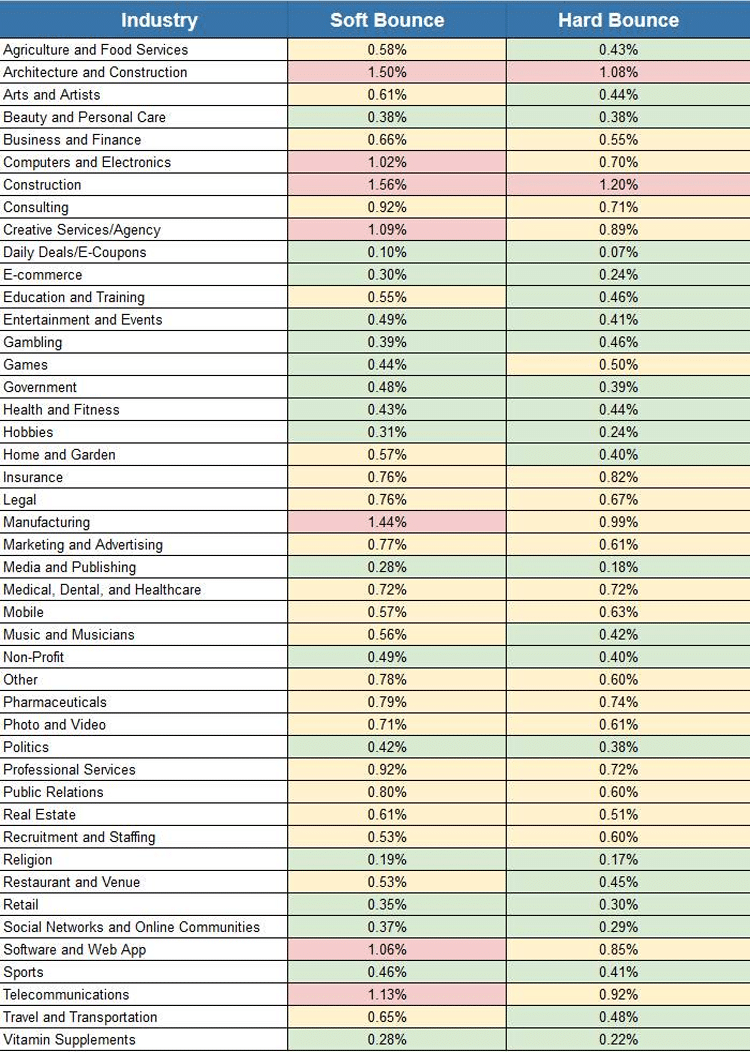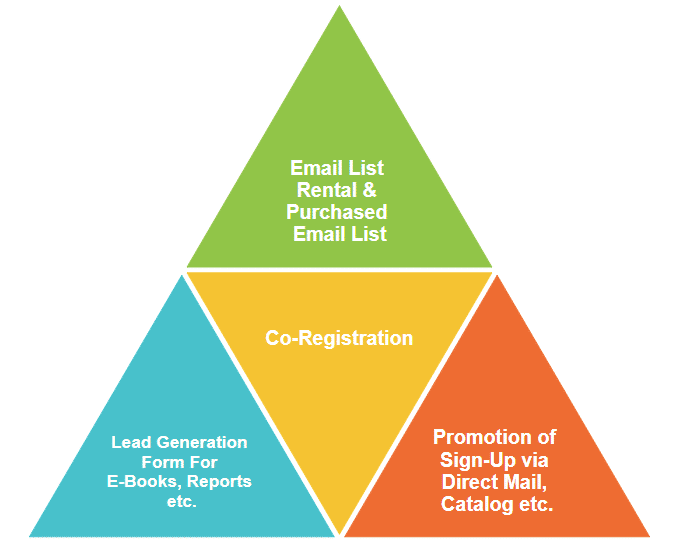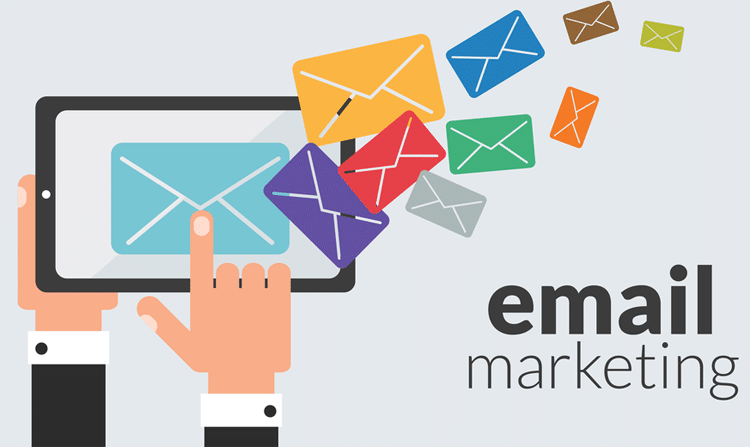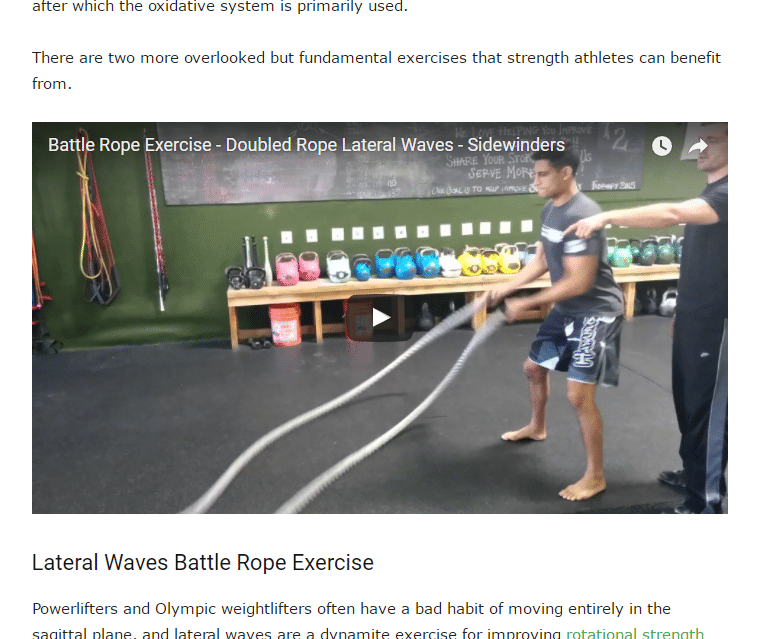Tuesday, 29 August 2017
Monday, 28 August 2017
Saturday, 26 August 2017
#SproutChat Recap: Creating Content on the Go
One of the most important and versatile tools a social media manager has is right in the palm of their hand—a smartphone. From on-the-go monitoring to content creation, it’s a must-have tool that only keeps advancing. Capturing moments can turn out to be more worthwhile than you know, so it’s best to be equipped with everything you need.
In this week’s #SproutChat, we were joined by Sprout All Star Elite, Fritz Klug, the Digital Content Specialist at Bell’s Brewery, to chat about the ins and outs of creating content on the go. We covered where to start, the benefits of timely content and best practices for creating engaging content.
It’s All About Timing
Take advantage of the moment by capturing something while it’s in action. Being able to show a behind-the-scenes look or a live event can be beneficial for a brand by delivering real-time content to your audience.
A1a. First: you always have your phone with you, so you can capture content at any time. #SproutChat https://t.co/oRgaGVvNeS
— Fritz Klug (@fritzklug) August 23, 2017
A1b. For example, I often get inspired out enjoying some of our beers. It’s great to have my phone there to capture some photos. #SproutChat
— Fritz Klug (@fritzklug) August 23, 2017
A1: Timeliness is important on social media. Sharing content in real-time can be very beneficial for engagement. #sproutchat
— Netvantage Marketing (@netvantage) August 23, 2017
A1: It gets done! I can strategize myself paralized. Finding moments to just get it done is getting it done! #SproutChat
— Deserae_Dorton (@Deserae_Dorton) August 23, 2017
A1. You can get some really interesting content that you couldn't get otherwise. #SproutChat
— Reva Minkoff (@revaminkoff) August 23, 2017
A1 Spontaneous content = authentic content! #SproutChat
— Katie Burton (@KatieBurton_) August 23, 2017
A1: A realistic creative atmosphere with more environmental stimulation can really fuel your creativity! #Sproutchat 🖌️🎨👨🎨
— Christopher Thames (@ChrisThames29) August 23, 2017
A1: Audience relates better to contents produced on the go #SproutChat
— Nam Le (@HelloItsNam) August 23, 2017
A1: New Location, New Ideas. Just changing the scenery can provide new perspectives. But must be fast & focused. #SproutChat
— Su Doyle (@sudoyle) August 23, 2017
Be Authentic
Since you’re capturing a moment while you’re out and about, be sure to tap into the authenticity of the moment and stay away from producing a high gloss piece of content. There are a variety of apps and tools that allow you to have a little fun with your photos and videos, but remember that the more authentic the content feels, the more engaging it will be.
Follow good photography rules. If you’re unfamiliar, look up the “rule of thirds” and different types of lighting. #SproutChat https://t.co/8f5HMSi2sg
— Fritz Klug (@fritzklug) August 23, 2017
A2b Something any photographer will tell you: It doesn’t matter what camera you have, but what moments you capture. #SproutChat
— Fritz Klug (@fritzklug) August 23, 2017
A2 I focus on authentic first, then a decent exposure. #sproutchat
— Toby Metcalf (@Toby_Metcalf) August 23, 2017
A2 There are many great filters on phones today and exposures on Instagram – experiment #sproutchat
— Toby Metcalf (@Toby_Metcalf) August 23, 2017
A2 Content on the go let's me play more with what mobile has to offer. ex; new filters, stickers, apps .. more engaging #sproutchat
— Denise Casagrande (@Free_DennyGurl) August 23, 2017
A2: Try to have a theme with images too. Use the same filter for pictures if possible so users know it's you or your brand. #sproutchat
— Netvantage Marketing (@netvantage) August 23, 2017
A2. Stop and focus. Or unfocus as the case may be. #SproutChat #takeagoodpic
— Reva Minkoff (@revaminkoff) August 23, 2017
A2:
1. Create a strategy
2. Create assets, get right tools
3. Empower social media managers
4. Engage away! #SproutChat— DoubleShot Creative (@DoubleShotTeam) August 23, 2017
A2: adobe spark is another good tool for on the go content, especially for instagram stories #SproutChat
— Suhail Al Uzaizi (@Suhail_Uz) August 23, 2017
Be in the Moment, Edit Later
If you’re creating videos on your phone, you’ll want to ensure that it’s a good quality, watchable piece of content. Try utilizing a tripod to stabilize and a plug in microphone for good sound quality.
A3a. To conserve time, try to shoot the video in one take. The less you have to edit, the better. #SproutChat https://t.co/0vHX8ceSvG
— Fritz Klug (@fritzklug) August 23, 2017
A3c. Audio is the most important part of any video: if your viewer can’t hear what’s being said, what’s the point? #SproutChat
— Fritz Klug (@fritzklug) August 23, 2017
A3: Good phone w/ good camera & fast internet = essential #SproutChat
— Win Shi Wong (@winshiwong) August 23, 2017
A3 don't use the Hyperlpse setting (Samsung) #sproutchat
— Toby Metcalf (@Toby_Metcalf) August 23, 2017
A3: buy a phone tripod/stabiliser. No one likes a shaky video 👋🏼 #sproutchat
— Jacky Barker (@JackyBarker) August 23, 2017
A3: Lighting and sound are two of the most important features of creating a good video. #sproutchat
— Netvantage Marketing (@netvantage) August 23, 2017
A3 Always make sure you're getting a good angle and lighting! #sproutchat
— Denise Casagrande (@Free_DennyGurl) August 23, 2017
A3: Some videos are best without sound too. How often do you try & watch a video in public, but stop because of the sound? #sproutchat
— Netvantage Marketing (@netvantage) August 23, 2017
Make Something New From Old Content
As a social content creator, you’ll want to steer away from getting too repetitive in what you share. Old content can always be spliced or edited into something fresh and new for use at a later time or on a different platform.
A4a. I always take more pictures and video than I think I need — you never know what will come in handy later. #SproutChat https://t.co/EP7vdMhddx
— Fritz Klug (@fritzklug) August 23, 2017
A4c. Get the content now — it’s better to overshoot today than wishing you had more tomorrow.
— Fritz Klug (@fritzklug) August 23, 2017
A4: Reuse live videos by posting them on other platforms or repurpose audio from a (live) video in a podcast! 💪 #SproutChat
— Marijana Kostelac ✏️ (@MarijanaKay) August 23, 2017
A4 As the self proclaimed #QueenofRepurposing, I'm using slicing, dicing & mincing content into as many pieces as I can. #SproutChat
— Shannon Mouton Gray (@ShannonRenee) August 23, 2017
A4 Yes, I'm in love with evergreen content. Have a long video? Slice it into shorter versions to reuse on social. #SproutChat
— Katie Burton (@KatieBurton_) August 23, 2017
A4 I'm taking long content & creating short blogs, infographics, tweets, lists and whatever else I can. #SproutChat
— Shannon Mouton Gray (@ShannonRenee) August 23, 2017
A4: Save to camera roll, use @evernote to record storyboard and set @googlecalendar reminder to post! #SproutChat
— Christopher Thames (@ChrisThames29) August 23, 2017
A4: I love pulling powerful quotes from blog content & repurposing into graphics for social. Works really well w/ interviews! #SproutChat
— Kate McGaughey (@kate_mcgaughey) August 23, 2017
A4) ✂️ long videos => shorter ones, combine videos to create series. Create GIF from pix/videos, Create unique memes #Sproutchat
— Nadine Tchepannou (@MissNadT) August 23, 2017
A4: If content is from a reoccurring event, repurpose 2 market future events (or highlight post-event). #SproutChat
— Jenny S. West (@jennyswest) August 23, 2017
In next week’s #SproutChat, we’ll be joined by Veronica Brown of the Chicago Public Library Foundation to chat about doing social media when you’re doing social good. Until then check out our Facebook community to connect with other folks in the industry.
This post #SproutChat Recap: Creating Content on the Go originally appeared on Sprout Social.
source https://sproutsocial.com/insights/sproutchat-content-on-the-go/
Thursday, 24 August 2017
How to Reduce Email Bounce Rate
Email marketing bounce rate is a metric that calculates the number of emails returned to sender.
Bounced email addresses hurt your sender reputation and have a negative effect on your delivery rate. The closer your bounce rate to zero, the better it is.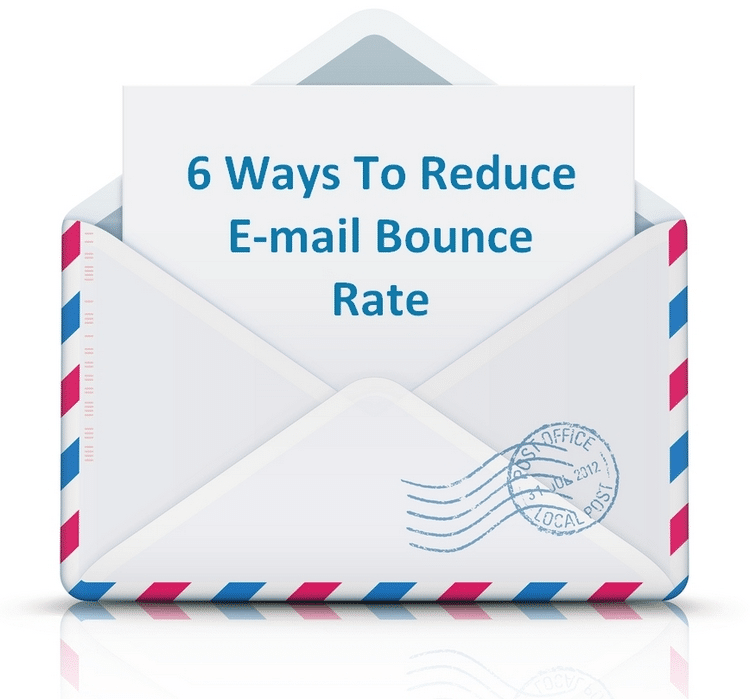
There can be many reasons why your email “bounced.” Discover common mistakes to avoid and efficient ways to reduce your email bounce rates to a minimum.
Email marketing has come a long way. Some marketers don't consider email marketing to be as effective as it used to be.
However, when approached the right way, email marketing proves to be the cornerstone of successful marketing campaigns.
Numerous factors define effective email marketing strategy: from headline to “send from” name.
Yet keeping an eye on your bounce rate - and taking action to reduce it - is the foundation of a rewarding email campaign.
Before we dive into the ways to cut your bounce rates short, you need to distinguish between two types of email bounces.
Bounces can be categorized as hard or soft depending on whether the error is permanent or solvable.
What Is a Hard Bounce?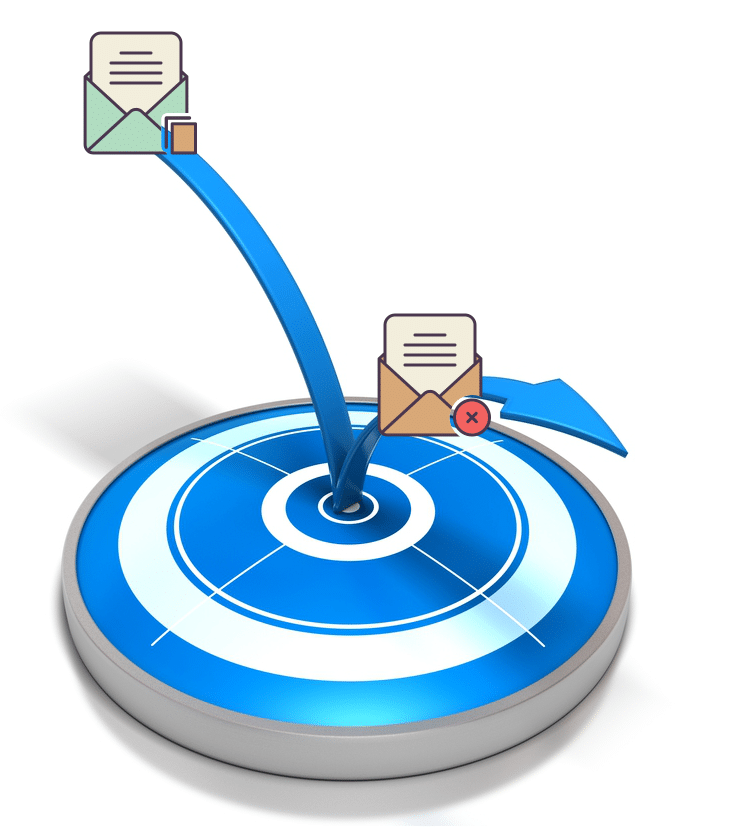
Hard bounce means permanent delivery failure. It happens when the email address fails and is not accepted by the recipient’s mail server.
Hard bounce can occur for a number of reasons, such as a typo in the email address or the email is no longer in use.
What Is a Soft Bounce?
A soft bounce occurs when the email bounces back to the sender after being accepted by the recipient’s server.
Email is categorized as a soft bounce when there is a temporary error. For instance:
- The mailbox has reached its full capacity
- There is an issue with the receiving server
- The email is identified as too large
Your email sender reputation directly impacts your deliverability rates.
Therefore, it is important to keep your bounce rates low to maintain good email sender reputation.
What Bounce Rate Is Too High?
The best way to track your bounce rate statistics is through the results in your email analytics reports. Bounce rates vary for many different reasons, even within the same industry.
However, if you need a benchmark to refer to, MailChimp offers industry-specific soft and hard bounce rate data.
This data is collected based on at least 1,000 email campaign subscribers from companies of various sizes within the same industry. Use it as your basic reference point.
1. Keep Your Lists Clean
Bounces occur because your email list is stale or out-of-date. One way to keep your list clean is to keep in touch with your subscribers regularly.
Make sure to always provide an option to unsubscribe or update preferences.
Furthermore, do not use your first email campaign to clean your list from outdated or invalid email addresses.
You will end up spending a lot of time and resources restoring your email sender reputation as a consequence.
If your current mailing list has not been used for over 6 months, try third-party services that offer bulk email verification and list-cleaning tools.
An example is the service offered by Byteplant.
2. Use Permission-Based Email List
Low bounce rates start with building permission-based email lists. Get good quality subscribers via your homepage, social media pages, checkout, and registration form.
Always provide a clear opt-in checkbox.
Do not use problematic sources for subscriber acquisition. These sources include bought or scraped email lists and co-registration opt-in.
Litmus provides top problematic resources for email list subscriber acquisition that will most certainly have a negative impact on your bounce rates.
In addition, you can use the double opt-in option for users to subscribe to your email list.
Once the user fills out your sign-up form, confirmation email will be automatically sent out to their inbox.
The user will be added to your mailing list only once they confirm their email address.
Double opt-in will allow you to avoid any bots, spammers, and typos. While it may seem tempting to make the sign-up as easy as possible for your potential subscribers, you will benefit much more from a double opt-in contact list in the long run.
3. Be Consistent With Your Emails
The more consistent your email schedule is, the more chances that your subscribers will not forget that they’ve consented to receive emails from you.
Keep some sort of email campaign agenda planned ahead of time to avoid any possible issues with spam complaints and bounce rates.
Regular email campaign schedule will keep your list up-to-date.
There is no “one-size-fits-all” when it comes to email frequency. Keep your subscribers and industry in mind when deciding how often to send your emails.
4. Steer Clear of Spam Filters
As obvious as it may be, avoid creating emails that are treated like spam by the filters.
Spam filters change their tactics over time so keep an eye on your email templates, content and links to avoid triggering spam filters.
Run spam filter tests and analyze deliverability results. Check the spamminess of your emails with tools like Mail Tester.
5. Do Not Use Free Sender Domains
Using free email send-from domains like “@gmail.com” will make your emails bounce or re-rooted to spam folder.
Use your business domain name instead. Your emails will not pass the DMARC policy check for Yahoo, Gmail, and AOL if you are using a free send-from domain.
6. Authenticate Your Domains
According to a Litmus study, one of the top sources for email marketing statistics, less than 40% of brands use three major methods of email authentication: SPF, DKIM, DMARC.
Domain authentication will positively influence your deliverability rates and decrease bounce rates. It will also prevent spoofing and security alerts to your subscribers.
Keep a close eye on your bounce rates and delivery reports. You should take appropriate action to fix any bounce rate issues as soon as possible.
It can be a very costly and lengthy process to fix any negative consequences.
Analyze your delivery reports and check if there are hard or soft bounces from any specific email domain.
Update your opt-in options and email templates. Make sure that email authentication is in place.
Following these six steps is a no-brainer and will allow you to keep your email marketing campaigns effective.
Never Stop Testing
Email marketing is a dynamic channel so what does not work today might work tomorrow.
The key here is to use any negative results to your advantage.
When approached correctly, email marketing is a failure-friendly channel as it requires minimal initial investments.
Experiment with A/B testing, various templates, send-from names and scripts. But most importantly, learn from any negative email campaign results.
Do not let the fear of failing deprive you of any potential success.
Watch your email reports closely to increase your competitiveness and deliver the right messages to your audience.
Jane Shel is a co-founder and content strategist at MiroMind SEO & Digital agency. Self-starter and blog-reader, she likes to share her know-how in digital marketing world.
The post How to Reduce Email Bounce Rate appeared first on Ninja Outreach.
source https://ninjaoutreach.com/email-bounce-rate/
Wednesday, 23 August 2017
Tuesday, 22 August 2017
How to 10x Your Content Strategy [6 Ways]
According to 2017’s B2B Content Marketing Report, over 91% of the most successful respondents reported that their organization is extremely committed to content marketing.
This should be a wake-up call for every business without a strong or dedicated content strategy.
At the same time, nobody is saying content marketing is easy. And SEO — the marketing approach that works with virtually all forms of online marketing, including content distribution and discovery — is still a relatively new field, whose rules keep changing all the time.
Years ago, Rand Fishkin, CEO of Moz, coined the term “10x content,” saying that the time had come when good, unique content simply wasn’t good enough anymore.
What was needed was stuff so good that it beat out the first results for a query a user might make on Google.
In this 10x spirit, I’m going to offer 6 ways that have helped me think about 10xing my own content strategy. In essence, it’s easy
In essence, it’s easy stuff—but don’t let that fool you. These are serious principles that, if ignored, will pretty much guarantee that the crawlers will bury your content.
1. Don’t skimp on the writing
One feature that immediately distinguishes good content strategies from bad ones is whether or not the writing is junk.
Whether it’s an article, a video script, or an ebook, in one way or another, it all comes down to the copy.
If it’s lazy, sloppy, or useless, it won’t matter in the long run how optimized it is for search engines.
All the keywords in this world won’t save you from junk writing—and indeed, the crawlers have long been sophisticated enough where they have begun screening out this sort of stuff.
This is not to mention the users themselves, who have a much better BS detector than I feel most content strategists give them credit for.
Write well, edit for typos, and have good, hopefully, original research. Principles like this will attract people to you.
For example, Leadpages, which offers landing page solutions for small to medium-sized business owners, produces regular content that provides research and info you can’t get elsewhere. This type of content strategy has worked extraordinarily well for them, and they continue to post growth and attract new users.
This type of content strategy has worked extraordinarily well for them, and they continue to post growth and attract new users.
2. Think beyond advertising
This one is a serious paradigm shift that many marketers just can’t seem to understand. Content marketing is not the same as advertising.
It performs many of the same functions as advertising, but its approach is way different and, in my opinion, way more respectful to the customer.
Great content builds a genuine relationship between your customer and your brand because it’s actually useful—it provides good information about a topic your customer/user is already interested in.
It doesn’t shove a sales pitch down the throat of your unsuspecting visitor. That would be impolite. Instead, you host valuable information that the user cares about and you let them come to you.
For example, weightlifting site BarBend.com recently published a comprehensive post about battle ropes (those are the heavy ropes you may have seen weightlifters swinging around at the gym).
This is a great example of the 10x strategy at work. The post provides value to its readers by not only giving a thorough analysis but also an easily digestible custom infographic.
Granted, this approach is a slower game than a flashy ad campaign, but it can deliver serious ROI when done thoughtfully.
Generally, graphics like this allow for better sharing across platforms like Pinterest, Tumblr, and Reddit, which can up engagement and views by several multiples. (The folks at BarBend informed me a visual hit on Pinterest alone could increase readership by 4x-6x on certain articles like the above.)
3. Say something new
The internet is stuffed right now with content answering almost every question imaginable, and much of this content is optimized to anticipate the way a user will search for it.
Your content strategy needs to take this oversaturation into serious account. How good of a chance does your page have to stand out if it’s merely engaging queries that the rest of the world has already dealt with?
We’re definitely not talking about page 1 Google results here, and that’s about 90% of all organic search traffic.
One way to approach this conundrum is to attempt to tackle the questions that haven’t been adequately answered yet.
This takes some data analysis, as well as creativity. Where are the blind spots in content?
These untapped queries represent tremendous opportunities to provide uniquely useful content to users.
In the battle rope case, someone who began their search merely curious about those heavy ropes in the gym finds themselves gaining a deeper understanding of neural connections from Aaron Guyett, Master Battle Rope Trainer, and U.S. Marine Corps Staff Sergeant.
It may be useful to focus your content strategy around responding to timely questions or events that quickly arise and need answers, rather than age-old issues for which millions of pages of content already exist.
But haven’t those heavy ropes existed for years? Yes, but with this explosion of new interest and a lack of up-to-date and comprehensive information on them, now is the perfect time to post on the topic.
Consumer reviews for overlooked, ubiquitous products like cars or security systems are more good examples of this principle at play.
A user base will always be curious about new products, but there may not be any pre-existing content that can address that curiosity.
4. Say it in a new way
And no matter what area of interest a content strategy aims to tackle, it’s also important that marketers begin to pioneer new ways of addressing questions.
Of course, the venerable listicle has proven to be an effective way of engaging user interest. But this was only figured out through trial and error.
You can bet that there are better ways of disbursing content to engage user interest. All it takes is creativity and determination to find them.
Even as early as 2014, for example, visual content began to usurp and overtake the written word, and it won’t be long before new content strategies depending chiefly on video become the mainstays of content marketing. Mark my words.
The battle ropes post also includes three videos that show exactly how to do different rope exercises with proper form. This is an easy way to show and tell.
The point here is that, even if you aren’t able to address an entirely new question or problem for your user base (and that is admittedly a bit of a tall order), you can still carve out your niche by providing this information in a unique way that has its specific appeal.
Remember, Alexander Graham Bell wasn’t the only one to invent the telephone—he just had the best iteration, and that’s why we remember him and not Elisha Gray or Antonio Meucci.
Who, you might ask? Exactly.
5. Make it shareable
This is somewhat obvious, but your content strategy has to take into account shareability if you really want it to be 10x.
Shareability is an elusive factor, and it can end up being a rabbit hole that you end up wasting a lot of time following down when you should have been more worried about the baseline quality of your stuff to begin with.
But with that caveat in mind, it’s still important to think about some of these qualities.
So don’t write a 300-word headline, obviously. Address relevant issues that speak to your readership, and try to make sure your content fits a narrative form that appeals to people—almost more than anything, people love a good story.
Going back to the battle rope example, it’s easy to imagine the kind of person that would seek out and share the post.
- What are those ropes I keep seeing at the gym?
- Are the stories I’ve heard about battle ropes causing injuries true?
- How do I make sure I use battle ropes correctly?
It’s the kind of post that people won’t only enjoy, but they’ll share it to help out their friends.
Also, make sure that all content strategy is designed with the mobile experience in mind, as it is fast becoming the dominant way to experience content.
And of course, don’t forget these:
6. Long form is good form
For some time, long-form content just wasn’t seen very often.
We can speculate why: Most of us don’t have much respect for a user’s attention span, and it makes sense why when we know that the average user stays on a page for less than 20 seconds.
For some time, long-form content just wasn’t seen very often. We can speculate why: Most of us don’t have much respect for a user’s attention span, and it makes sense why when we know that the average user stays on a page for less than 20 seconds.
But maybe that’s the fault less of the user than of the web page. If your content is useful, why not make it long?
Juicy, long content chock full with helpful data and illustrations excites users and makes them want to share. It answers their questions and provides additional insights to leave them feeling fulfilled.
It answers their questions and provides additional insights to leave them feeling fulfilled.
Of course, I’m not saying all content need be long form, but gone are the days when it should be avoided simply as a matter of course, and a robust content strategy should include it.
On top of the battle ropes article meeting all of the above criteria, it’s 1,400 words of analysis and in-depth interviews with industry experts.
It’s all-encompassing, well-written, provides real value to readers, says new things in new ways, and is shareable. It’s 10x content.
Kenny Kline is a serial entrepreneur. His ventures are primarily focused on media and digital marketing. When not in front of his computer, he can be found beekeeping, knitting, and being as Brooklyn as humanly possible.
The post How to 10x Your Content Strategy [6 Ways] appeared first on Ninja Outreach.
source https://ninjaoutreach.com/10x-content-strategy/
Monday, 21 August 2017
Saturday, 19 August 2017
How Agencies Can Prove the Value of Engagement to Clients
It doesn’t matter what city you live in, the size of the agency you work for or the piece of business you work on—sooner or later your client will ask the one question known to make even the most seasoned social media marketer wince: “What’s the value of engagement?”
Of course, methodologies already exist to quantify attribution to harder metrics, like web traffic and lead generation on social. But what if your client is a brand that doesn’t focus on B2B sales, e-commerce or another neatly quantifiable objective? How can agencies effectively prove the value of social media engagement to clients?
Setting the Record Straight
The thing is, proving the value of engagement will never be about tying a clear, quantifiable dollar sign to likes, comments, shares, DMs or @mentions. There’s too much ambiguity in that pursuit to satisfy any of your stakeholders. Engagement is more about building and maintaining the relevancy of a brand in the mind of its social community. Luckily, there are some pretty great ways to do just that that your client will see value in.
Don’t hang your S.O.W. hat on this, but your engagement efforts just might be rewarded with an uptick in site visits (🙌 ). Socialbakers conducted a study that found a direct correlation between Facebook engagement and site visits. Top of mind, it seems, can equal tip of finger.
Engage the Community, Build the Brand, Prove the Value
Time to get down to the fun stuff. Here are three ways you can prove in no uncertain terms, the value of engagement to your clients.
1. Social Customer Care
Social customer inquiries may appear as a comment on a post or they may be stand alone as posts to your page or @mentions. Both are engagement. Jay Baer of Convince and Convert claims that “social media customer service is the new marketing” and we’re apt to agree. Why? Because nearly every initial interaction on social is public facing. It’s a “spectator sport,” as Baer puts it. That means that when you provide outstanding customer service on social you get more than just the benefit of preventing a lost customer, you get to reinforce the brand’s commitment to the customer in the eyes of every person who saw the comment, post or tweet.
The formula for successful social customer service is pretty easy. Reply quickly, empathize, go the distance in making the customer happy (this separates the wheat from the chaff in business) and close the loop on the social post. Pro tip: If you need to turbocharge your customer care efforts on Twitter, try automating individual workflows with a bot builder.
Lastly, prove the value of social customer service by documenting each case and then review your results each month with your client. Results vary by industry and social platform, but with a smart strategy and a little digital elbow grease you’ll be showing your client how Twitter “decreases cost per customer care resolution by 80%” compared to other customer service channels.
2. Get Real Feedback from Brand Advocates
Where else beside social can you find an audience willing to provide feedback about a product or business honestly and without compensation? 70% of brand advocates recommend at least 5 products per year to their friends and family, so it stands to reason that they would just as well want to share their opinions about your client’s brand with you.
Why not give them that opportunity? Start by collaborating with your client to figure out what pieces of feedback you’d like get from the brand advocates. Then turn the comment section of a social post or a Twitter chat into an open focus group with a strong call to action. Don’t be afraid of honest criticism. That’s the point. Actively respond and thank the community members for their responses. If you have some great brand swag, now would be the time to give it out.
The cool part about this tactic is that it can be used to add a layer of anecdotal insight to a product feasibility study or focus group. Plus, no matter how you use the response data, you’ve now succeeded in giving your biggest advocates a level of ownership over the brand that will likely deepen their affinity. Hello, word of mouth, it’s great to see you again.
3. Gather Insight on Engagement Through Social Listening
You’re posting engaging content, providing great social customer care and getting honest feedback from your advocates. You’re in the engagement trenches and loving every second of it. That’s awesome, but it’s time to take a step back and listen.
What you want to do now is use social listening to get a macro view of how consumers are engaging with your client’s brand. As D.C.-based consulting agency, Clutch, put it, “Think of the data collected through social listening as crowd-sourced research about your industry and customer base.” This is the forest to the previous bullet’s trees.
Three areas to focus are:
Sentiment-based terms used in conjunction with brand keywords. By utilizing custom keyword search queries and trend visualizations, you can identify areas of need when they matter most. Are you seeing a trend of ‘frustration’ terms around your client’s product? Address the issue on social and make clear the intention to fix it. Is there a positive keyword that sticks out? Good, highlight that strength in a post and watch the love roll in.
Side-by-side engagement trends by channel. What strengths do you see emerging for your client’s channels? Is Facebook the place for conversations while Twitter is for pass along? Maybe one channel is becoming the go-to for brand advocates while the other is plodding along. Use this information to optimize your content and engagement strategy. Engagement in, smarter strategy out.
Competitive analysis. Clients love this one. Show your client how their brand’s engagement stacks up against its top three competitors. Crushing them? Value proven. Lagging behind a bit? Give your tactical recommendations for how you plan to improve. Use our Ultimate Guide to Social Media Competitive Analysis to set yourself up for success.
Now that you’re on your way to becoming a master at proving the value of engagement, just remember that everything discussed above will take trial and error to dial in. It’s part of the multi-faceted, slow burn upside that is social media marketing. Take your time and tackle one piece at a time. As a British statesman once wrote, “Anything worth doing is worth doing well.” With any luck your client will feel the same way.
This post How Agencies Can Prove the Value of Engagement to Clients originally appeared on Sprout Social.
source https://sproutsocial.com/insights/value-of-engagement/
Friday, 18 August 2017
#SproutChat Recap: Social Media & Measuring Success
Marketers know that what metrics matter for one brand, aren’t always the same for another. Working in social, it can be tough to effectively measure the ROI of a social campaign since it’s not as cut and dry as a traditional marketing campaign. Of course, you can’t get around having to present the value of your efforts to leadership, especially if you have revenue goals tied to social.
In this week’s #SproutChat, we were joined by Sprout All Star, Jasmin Bollman of Rebel.com, to discuss challenges with social metrics and measuring revenue goal success from social campaigns.
Ensure Goals Are Being Met
Measuring your social ROI is a way to track and make sure that your efforts are meeting your brand’s bottom line. This measurement helps inform business decisions and social strategy direction.
A1 – The simplest explanation: it's what you get out of what you put in to your social media. #SproutChat
— Jasmin (@jasmin_der) August 16, 2017
A1 – Social ROI is what a company is getting back from the time, effort and resources put into social media. #sproutchat
— Rebel.com (@rebeldotcom) August 16, 2017
A1: Return on Investment aka in simple terms: are you getting the most bang for your buck. #SproutChat
— Apple Box Studios (@AppleBoxStudios) August 16, 2017
A1 social media ROI is the financial benefit you receive from you efforts #sproutchat
— Toby Metcalf (@Toby_Metcalf) August 16, 2017
A1) ROI refers to the results of your social media outreach – are you getting more customers? Meeting business goals? #sproutchat
— Gordon (@gordondym) August 16, 2017
A1: Tracking and measuring our social strategy to prove it's worth! #SproutChat
— Nicole Osborne 🍭 (@Lollipop_Social) August 16, 2017
A1 SM ROI can be based on a variety of measurements. Not one size fits all #SproutChat
— Daniel Hachey (@daniel_hachey) August 16, 2017
A1. Social media ROI is really making sure that your social media efforts are impacting the bottom line. #SproutChat
— Reva Minkoff (@revaminkoff) August 16, 2017
ROI Isn’t Always Universal
Keep in mind that what works for one brand could be very different for another, as not all businesses strive toward the same goals. Take the time to consider your target objectives and make sure that your social campaigns are aligned with these.
A2 – Are you looking to raise awareness of your brand or increase conversions on your site? #SproutChat 1/2
— Jasmin (@jasmin_der) August 16, 2017
A2 – Depending on your industry, certain metrics will be weighted heavier. #SproutChat 2/2
— Jasmin (@jasmin_der) August 16, 2017
A2: It changes based on the industry AND type of post that is shared. Different SM posts have different goals. #sproutchat
— Netvantage Marketing (@netvantage) August 16, 2017
A2: What you measure and how you measure it depends on what your goals are. What are you trying to achieve? #SproutChat
— Express Writers (@ExpWriters) August 16, 2017
A2: In #B2B—leads, leads, leads! #SproutChat
— Skuid (@skuidify) August 16, 2017
A2: I think how measure is directly related to your goals. Goal-Increase awareness? Engagement and followers can support that #SproutChat
— Deserae_Dorton (@Deserae_Dorton) August 16, 2017
A2. Define the #MetricsThatMatter to your business. Follow visitors from social to your content offers using Google Analytics. #sproutchat
— Mike Mills (@SagefrogMike) August 16, 2017
A2: ROI on social posts can be measured by interaction from the target of that post. Not all posts are geared toward everyone #SproutChat
— Brendan Cooper (@SagefrogBrendan) August 16, 2017
Present Clear & Concise Information
Since social ROI is not as clear-cut to measure as traditional marketing campaigns, be sure that you’re presenting the most applicable data to senior leadership. Tell the whole, contextual story so those not involved in the day to day efforts feel as though they have a real grasp of what’s working.
A4 – You need them to understand what you’re trying to accomplish on social, to start with. #SproutChat 1/2
— Jasmin (@jasmin_der) August 16, 2017
A4. Revenue generated. People touched. Reach. Effectiveness – who did what you told them to. #SproutChat
— Reva Minkoff (@revaminkoff) August 16, 2017
A4 Great Q. We use detailed Excel spreadsheets right now, as well as the PDFs from @SproutSocial. #sproutchat https://t.co/bpNAbPtvTs
— Courtney Kochuba (@CourtKochuba) August 16, 2017
A4 The value of estimated cases deflected thanks to correct answers / blogs viewed in your community #sproutchat
— Toby Metcalf (@Toby_Metcalf) August 16, 2017
A4 – I report monthly on some basic stats as a general overview. But they know those stats are not our end goals. #sproutchat
— Rebel.com (@rebeldotcom) August 16, 2017
A4: Finger paint.
Unless they're involved in the SM process & understand the psychology behind some of it, don't overwhelm them #sproutchat— Jeff Higgins (@ItsJeffHiggins) August 16, 2017
Make Room for Changes Along the Way
It’s good to understand what’s performing well and what’s not, but it’s almost more important to be flexible to change along the way. Be agile and allow some wiggle room when business goals shift or the ROI isn’t what you initially mapped out.
A5 – I look to see what people are engaging with most – and it’s always, always photos of @rebeldotcom behind-the-scenes. #SproutChat
— Jasmin (@jasmin_der) August 16, 2017
A5 – Since I know that is what our followers engage with, I work to balance that with my regular promo duties. #SproutChat
— Jasmin (@jasmin_der) August 16, 2017
A5 – If we have an ad campaign running, we check in several times each day and will change up targeting based on performance. #sproutchat
— Rebel.com (@rebeldotcom) August 16, 2017
A5: It's always good to tweak plans but make sure it's not too often or too soon to really understand your results and metrics #SproutChat
— Jeff Higgins (@ItsJeffHiggins) August 16, 2017
A5: It's really based on your goals and what you're trying to achieve with each campaign. #SproutChat
— Express Writers (@ExpWriters) August 16, 2017
A5. And don't forget to consider all the various variables. There's usually more than one with social. #SproutChat
— Reva Minkoff (@revaminkoff) August 16, 2017
A5. Every 6 months do a high level strategic review. Do more of what's working, and less of what's not. Proof is in the pudding. #sproutchat
— Mike Mills (@SagefrogMike) August 16, 2017
A5 every time the data shows me I need to! If you're not getting your desired results, and data proves it, you've gotta pivot #SproutChat
— LUCYrk (@LUCYrk78) August 16, 2017
A5: Our strategies change to meet campaign objectives. #SproutChat
— Daniel Hachey (@daniel_hachey) August 16, 2017
Take Immediate Small Steps
There are many small items you can tick off a list that can help improve your measurement goals. Start by tracking objectives, add UTM codes to links and tagging your posts by segment type.
A6 – Don’t spread yourself thin by trying to have a presence on every social media platform. #sproutchat
— Rebel.com (@rebeldotcom) August 16, 2017
A6: Your ROI depends on your brand goals. Fishing with a few poles is fine, throwing a bunch of nets just spreads you too thin #SproutChat
— Jeff Higgins (@ItsJeffHiggins) August 16, 2017
A6: Determine top social influencers in the industry that can boost your brand awareness to a new level #sproutchat pic.twitter.com/9h7121lqRB
— Brendan Cooper (@SagefrogBrendan) August 16, 2017
A6. Get the right people in place, know what you want to measure is actionable. #SproutChat
— J. Nolfo 🦏 (@jnolfo) August 16, 2017
A6 – Don’t spread yourself thin by trying to have a presence on every social media platform. #sproutchat
— Rebel.com (@rebeldotcom) August 16, 2017
A6. Track track track your data and do something with it! Act on your successes and failures rather than setting and forgetting.
— 🍺™ (@kellNworldpeace) August 16, 2017
UTM CODES!!! #SproutChat
— Daniel Bailey (@DaJoBa) August 16, 2017
Join #SproutChat next Wednesday, August 23, at 2 p.m. CDT, to chat about creating content on the go with Sprout All Star Elite, Fritz Klug of Bell’s Brewery. Until then join our Facebook community to network with other folks in the industry and stay up to date on #SproutChat events.
This post #SproutChat Recap: Social Media & Measuring Success originally appeared on Sprout Social.
source https://sproutsocial.com/insights/sproutchat-measuring-success/
How Monarch Implemented a Social Strategy That Drives ROI
Monarch has been operating out of the UK since 1968. Since its inception, the airline has centered its business around one core objective: providing an exceptional customer experience. While Monarch’s goal has remained the same, the consumer journey has drastically changed since the company first took flight. Long gone are the days when call centers were the only answer to customer care.
The fact that 49% of consumers are more willing to purchase from brands that respond to them on social makes it imperative that Monarch is more than present online, it needs to be proactive. In accordance with its mission, the airline regularly engages in personalized conversations with current and prospective passengers.
But how does this investment translate to revenue? Like most organizations, Monarch’s team found it challenging to communicate the business impact of social engagement to leadership. This changed once the airline implemented a four-part approach focused on efficiency and driving ROI.
Break Down Silos & Structure for Efficiency
Monarch segments its social customer care team without sacrificing communication. The airline divides its customer care agents into two groups: ‘flights’ and ‘holidays.’ The flight team is responsible for pre- and post-flight inquiries while the holiday team manages all things related to Monarch’s travel packages. Twenty-four agents, split into two teams of 12, are active in Sprout Social. Regardless of where they sit, each agent is able to identify and task inbound messages to the appropriate contact. Best of all, agents don’t have to worry about overlap. Sprout’s user-level permissions and collision detection features ensure that duplicative efforts are avoided.
Invest in the Right Social Platforms
Eighty-percent of customer service requests on social happen on Twitter. And, when compared to other customer care channels, Twitter decreases the cost per customer care resolution by 80%. These figures alone make the platform a natural conversation hub for passengers looking for information or in need of an immediate response.
To accommodate the wants and expectations of their customers, Monarch doubled down on Twitter. Within eight months, Monarch decreased its reply thread size by 11%. The airline adopted a twofold strategy that focuses on proactive and reactive customer care.
Proactive, planned content is more advertorial. This content is meant to inspire and educate customers on where Monarch flies and what travel packages the airline offers.
Spend a week of luxury in Gran Canaria at the beautiful 5* Bohemia Suites & Spa! Flights & 7 nights from just £829pp https://t.co/2gNDdGi20W pic.twitter.com/B8rk2MrbDc
— Monarch (@Monarch) August 3, 2017
Reactive, real-time conversations are aimed at relationship building through quick, accurate responses. Customer care agents sign each Tweet with their initials. This extra level of engagement enables Monarch to build a personal rapport with passengers.
Thank you for the article! Hope to see you onboard very soon 🙂 ^NB https://t.co/xYSZJRhmHg
— Monarch (@Monarch) August 4, 2017
Put the Customer Experience First
A study conducted by Twitter, in partnership with Applied Marketing Science, revealed that customers who receive a response from an airline inquiry on Twitter are willing to spend approximately $9.00 more with that company. For Monarch, that means money. In 2016, Monarch publicly interacted with 20,342 unique users on Twitter–giving the airlines the potential to increase its yearly revenue by $183,078.
Still, a response isn’t enough. When customers interact with an airline on Twitter they expect that their problem is resolved on Twitter–not on another platform. A seamless customer experience stands out against the airline’s competitors.
But what happens when passengers are Tweeting questions with answers that rely on sensitive information? How does Monarch keep the conversation on Twitter when it will likely progress to confidential details?
When interactions start to move towards collecting sensitive information, agents direct customers to Twitter’s private message functionality with Twitter DM Deep Links. This enables customers to send a Direct Message to Monarch without leaving the original Tweet.
“The fact that we’re providing the DM Deep Link makes that process so much smoother. It goes back to the customer experience–making it easier and more friendly,” said Naomi Bressan, Social Media and Contact Executive at Monarch.
Since enabling Twitter DM Deep Links in Sprout, Monarch has experienced a 37% increase in DMs, allowing them to help more customers, more efficiently. Which, according to Twitter, is significantly higher than DM Deep Link’s average 30% Tweet-to-Direct Message conversion rate.
Standardize Reporting Metrics
Monarch’s team knew that in order for its social customer care and engagement efforts to be fully understood by leadership, reporting metrics had to be standardized. That’s why the team gives special attention to Sprout’s Twitter Feedback Report which highlights team Net Promoter® Scores (NPS)–a methodology used to gauge customer loyalty.
“Twitter NPS is amazing because our Customer Insights team is already using that system to measure customer satisfaction. Now, we can really start to measure social care and benchmark Twitter against our other channels,” said Bressan.
Standardizing reporting metrics across functions allows Monarch’s social team to accurately and effectively communicate the ROI of engagement across the organization. Since enabling Twitter Feedback, the airline reports an 8.8 out of 10 average customer satisfaction rating which correlates to an outstanding 50 NPS score. Proving to leadership that Monarch’s customers aren’t only present on Twitter, they’re engaged.
This post How Monarch Implemented a Social Strategy That Drives ROI originally appeared on Sprout Social.
source https://sproutsocial.com/insights/monarch-social-strategy/
Thursday, 17 August 2017
Wednesday, 16 August 2017
3 Components of Social ROI Your Brand Is Forgetting About
Most marketers view social as one of two things: an extension of existing customer care efforts or an advertising channel. In order to truly see the bottom line impact of social, your organization’s viewpoint needs to shift. You need to think of social as a building block that has the power to support, inform and accelerate nearly every aspect of your business.
Focus on three analytics that illustrate social’s impact beyond marketing–research and development, customer retention and referrals.
Research & Development
Social democratizes and diversifies the feedback loop for brands. It widens your focus group from a small subset of people who have the time and willingness to give feedback to a large group of engaged customers who are invested in your brand.
While social is a scalable, cost-effective way to collect demographic data, that feedback is wasted unless brands learn to apply that insight to their business. A Kalypso study on “Social Media and Product Innovation” revealed that while 70% of brands surveyed intend to use social for research and development, only 33% have a plan in place that allows them to apply those learnings. Furthermore, if there isn’t a solidified feedback funnel, the social media team loses its opportunity for attribution. Which makes it even harder for them to prove social’s organizational value.
Quantifying social’s impact on R&D isn’t as difficult as you might think. With management platforms like Sprout Social, you team can tag inbound social messages that are part of a larger campaign, contain product ideas or consumer feedback. From there, you can run a report that aggregates your tagged messages and provides meaningful and actionable customer data to stakeholders and senior leadership.
Customer Retention
A recent study from Duke University corroborated that CMOs are more likely to focus their resources on customer acquisition vs. retention. Proving these efforts are misguided, Harvard Business Review has cited that it’s five to 25 times more costly to acquire new customers than to retain existing ones.
Social is a front line to customer retention. It provides a personality to a faceless brand. The two-way conversation that social provides allows even moderately engaged customers to feel like they have a direct line of contact to your business. As a result, brands that use social media to interact with existing customers generate a higher Net Promoter score by an average of 33 points and increase customer spending by 20% to 40%.
But how can you translate that value into a measurable impact on your business? Frankly, it requires breaking down departmental silos and encouraging collaboration across internal teams — two actions that are proven to be extremely difficult for even the most agile companies.
Your sales and marketing teams should work to collaborate and track increased retention among customers who engage with your brand on social. Sure, it’s not easy, but strategizing and mapping out a cross-functional plan with your digital marketing, email, database and sales team will allow you to correlate data and accurately attribute retention to social. From there, you can start to understand the full picture of your efforts and compare those customers with your average retention rates.
Referrals
Referrals are one of the oldest forms of marketing and social casts a wider net on the act of simply telling your friends about a cool new product. Now you can turn on your smartphone and immediately send a Tweet to Virgin America that shares your thoughts with over 700,000 Twitter followers. Social is one of the most frictionless means of referral. It is scalable for a business and requires minimal work for the consumer. What other medium provides that?
One positive customer experience on social, amplified, could trump your million-dollar ad buy for the Super Bowl. It’s a real time, human-driven platform that can invoke the interest of a global audience or international media outlet in a matter of minutes. It’s the best medium we’ve ever had for engaging with customers and, in many ways, it’s still in its infancy stages. That’s why organizations that are still using social as an extension of their traditional advertising tactics come across as stale and, quite frankly, lazy.
With the simple additions of UTM codes and by taking advantage of advanced tracking, your brand can quickly and easily launch and measure a social referral program that benefits your business and its customers. Unlike email, phone or direct mail marketing, Facebook, Twitter and Instagram enable a brand’s consumer base to become a massive word of mouth machine. And since word-of-mouth is the primary factor behind 20% to 50% of all purchasing decisions, business shouldn’t be ignoring social’s impact.
Organizations typically try to attribute ROI metrics to individual tasks that can are easily quantifiable–reach, lead generation or traffic. But in order to accurately measure ROI, the importance of social throughout the organization needs to be communicated from the top down. It’s critical to onboard your organization in listening and engaging with your audience. Because, regardless of what business you’re in, it’s the customer journey that will have the most positive impact on your bottom line.
An adaptation of this article original appeared in Entrepreneur.
This post 3 Components of Social ROI Your Brand Is Forgetting About originally appeared on Sprout Social.
source https://sproutsocial.com/insights/components-of-social-roi/
Tuesday, 15 August 2017
How to Build Relationships with Any Twitter Influencer - Guide + Bonus
Here’s something I am sure of about your business/blog.
Thing #1: You’re just starting out and plan to use influencer outreach to get things moving.
Thing #2: You’ve been in it for a while, have seen some degree of success but still use influencer outreach to keep things moving or take things to the next level.
I might not be entirely right about you, but the thing is to succeed online, we need the help of influencers.
That’s when influencer marketing as a whole comes into place.
In this guide, I’ll be walking you through using Twitter to get to influencers’ radar and get them to reply to your emails and want to work with you.
Quietly raise your hand if this matches you.
You plan a new blog post, do your research, put all your ideas together, get to writing, then you hit the Publish button.
No comments. No new subscribers. No shares. Worst of all, no traffic!
You do another round of research, this time how to promote your article, and come across several blog posts that shout “REACH OUT TO INFLUENCERS!”
You craft an excellent outreach plan, and the next thing you know you’ve sent tons of emails to the big guys.
You check your Gmail inbox now and then to see if someone would take the time to reply.
Crickets.
You refresh and refresh. And refresh some more.
Here’s the thing:
Your email isn’t bad. You did your work, but there’s one thing left.
YOU DIDN’T BUILD A GOOD RELATIONSHIP WITH THOSE INFLUENCERS!
It’s past that time when you just drop 2-3 comments on the influencer’s blog and expect a reply. Or you tweet out 2 of the influencer latest articles and believe “I’ve done my work.”
A lot of people do this already, so I guess we need to switch things up a bit.
To build relationships with influencers online, you need to “move” with them.
So in this guide, I’ll detail every step you should take using Twitter to build a connection with the biggest influencers in your industry and get replies from them fast.
I know what's probably going through your mind right now.
“Why Twitter?”
Over the past few months (almost a year now) in my online business/marketing journey, I've learned a few key things about Twitter I'd personally tell anyone and anything I meet.
Key thing #1: It's the number one social media platform to build relationships with influencers.
Key thing #2: It's a “display social proof” social media platform for businesses and brands.
Here’s the thing about building a connection with influencers.
Thing #1: It’s not easy.
Thing #2: It pays.
In a nutshell, it’s termed “Twitter influencer marketing.”
A lot of marketers have their way of explaining or defining this term, but I believe it all boils down to this:
Twitter influencer marketing is the strategic use of Twitter to connect with influencers (with a targeted following) with the goal of getting them to promote your stuff with their followers.
SN. Have a better definition? Please drop a quick comment and let me know. I’d love to hear yours.
To me, it’s the fastest and easiest medium to create “beautiful relationships” with influencers online.
Yes, you've heard and read of case studies of people crushing it with blog commenting but here's the thing:
Bloggers blog only a few times a week compared to how they tweet. Some even blog once a month but the recommended number of tweets per profile in one single day is pretty high, which means we get to move along with them, their lives, and their businesses better on Twitter (and social media in general) than on their blogs.
Exactly ten months back when I started online, I never knew the goodies behind building friendships with the influencers in my niche and also my target audience until I launched my first free email course, which failed (0 enrolled students) because I never cared to build friendships with influencers even though I knew the benefits.
Fast forward to now, I've learned to build genuine relationships before any other thing, all of which started on Twitter. And that's exactly what I'm going to show you in this guide.
Without wasting much of your time, let me show you how to get influencers to notice you and your brand, and get them to always welcome your emails into their inbox (even if it's the first).
This guide consists of three different stages.
Stage #1: the pre-outreach.
Stage #2: the outreach.
Stage #3: post-outreach.
Stage #1: the pre-outreach
As the name implies, this is what you do to create the perfect relationship before you hit send on that sweet email that has spent decades in your draft receiving all sorts of editing and tweaking, waiting for that day when it’s finally sent to that big guy you want a link or tweet from.
It’s the most important stage of building a relationship with an influencer online.
It's this stage that really determines everything. This is where the influencer gets to know or see your name for the first time.
It's the meaty aspect of this whole outreach thing.
You wouldn’t want to mess that up, right?
Most of us abuse this stage. A lot! Especially we, the new ones. 
All we do is drop spammy comments, retweet thousands of their tweets in one hour, then go ahead with reaching out expecting a reply from the influencer.
I’ve broken down the pre-outreach stage into two simple steps so you wouldn’t get lost.
Step #1: Plan what’s theirs.
Step #2: Get in touch.
Step #1: Plan what’s theirs.
Here’s the thing about online influencer outreach. I guess we should have known this by now:
It’s always a win-win thing. You give value to receive a favor in return. We’ve heard it from them (the influencers).
“If you don’t provide value and only ask them to do something for you, your success rate is going to be extremely low” – Tim Soulo
The first thing to do is to get something really valuable for them. This should be really creative and should stand out.
If you can’t think of something worth it, then you shouldn’t expect anything good.
This can get a little tricky because it means a lot of work. You have to do a lot of research to provide the best value.
I've found myself guilty of skipping this aspect, and I've since regretted it.
Here are few practical examples to get you started:
- At the bottom of this article on Smart Passive Income, Eric provided value to the readers by creating an Excel file to complement the article in exchange for a link.

- How Bryan Harris of Videofruit neatly outlined his “what's in it for them” during a Leadpages giveaway he did a while back.
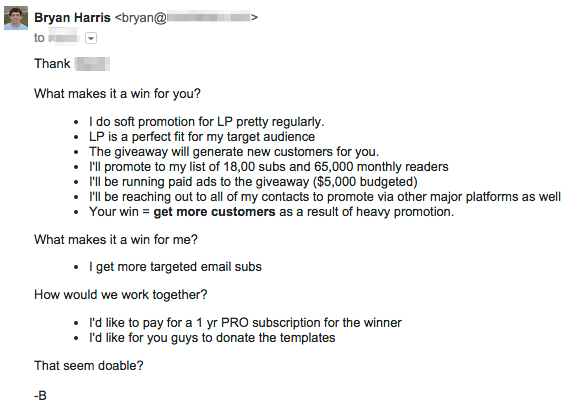
I would love for you to take your time coming up with something really valuable, something they’ll have trouble rejecting.
To increase the odds of getting that reply you want, you need to increase the value in what you give.
Bonus tip: Something I find myself mostly missing is I forget to clearly state my “what's in it for them” in the outreach email.
Detail why they should reply, read, or tweet your article. If possible, state the reasons in list or bullet form.
Step #2: Get in touch.
Here’s how to use Twitter to know exactly what Twitter influencers are interested in. Here’s a trick I’ve been using. It works.
Here are two things you'll need to focus on:
- Who they like
- What they love
I’ll explain.
Who they like
I always use this trick to get to influencers’ radar even before I engage directly with them.
When you know who they like and engage with the most, you can start getting on their radar easily. And trust me, they’ll get the feeling you are original.
You don’t just wake up one morning and start retweeting their tweets just to get something from them. It shows “I know you through this guy you like.”
Much better, right?
Here’s how you do it.
Use a tool like Twitonomy to know who your influencers retweet the most.

Log in using your Twitter account and then authorize.
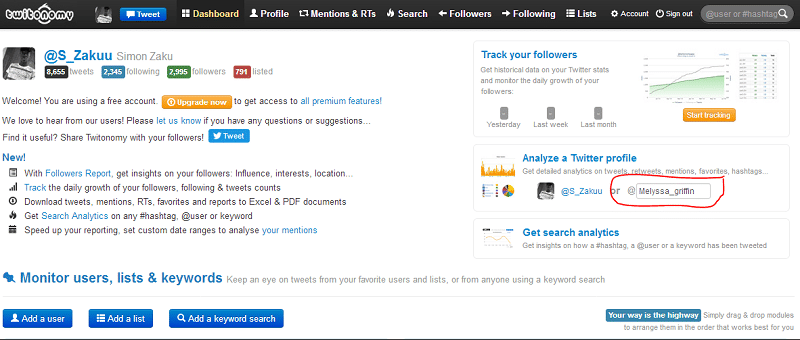
Plug in the Twitter handle of the influencer and search. (I am using @melyssa_griffin.)
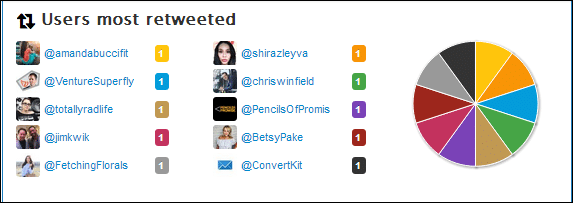
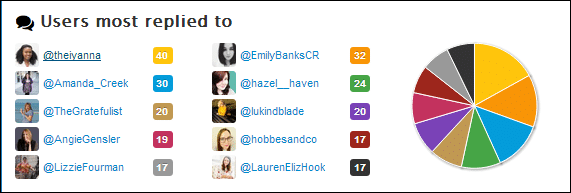
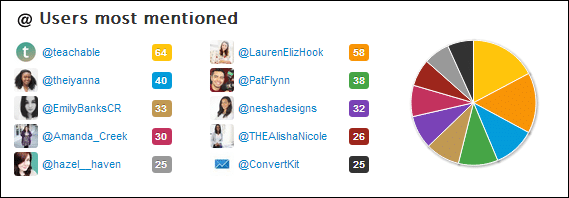
Now that you know who your influencers connect with the most, go ahead and be friends with them.
But a word of caution: A lot of us mess around with how we engage with people on Twitter and social media in general.
Please don't just jump onto their profiles and start replying to all their tweets.
It’s spammy!
Don't reply to a tweet you don't like. When you like one of their tweets, drop a really sweet comment.
I'd prefer you reply to those tweets that are non-promotional. I mean something like this:
Wow, that's cool, Ben
— Simon Zaku (@S_Zakuu) May 24, 2017
Haha, thanks Simon! We're WAY more excited about donuts than cake.
— Ben Sailer (@Ben_CoSchedule) May 24, 2017
They don't promote anything. They mostly talk about something personal.
I’ll shout this over and over again.
Don't reply to tweets you don't like. I repeat, don't reply to tweets you don't like.
Like the tweets in their conversations with your target influencer. Reply to those you can. Please don't force it. Let it flow. It's what works.
What they like
Visit their profiles and get a feel for what they talk about the most. What content do they talk about? What are they most interested in?
Here's how you do it:
Step #1: Visit their profiles. Check their feeds and look for repeating trends in the types of things they share.
Here's what I mean.
3 Things You Need To Do To Make Money Blogging https://t.co/y80b5sPTBI pic.twitter.com/KG5nAgBqUR
— Sue Anne Dunlevie (@SueAnneDunlevie) July 9, 2017
Discover the best way to make money online. https://t.co/KHJQCge8hf
— Sue Anne Dunlevie (@SueAnneDunlevie) July 9, 2017
How to Make Money Writing a Blog https://t.co/hCD1xq9yJF
— Sue Anne Dunlevie (@SueAnneDunlevie) July 9, 2017
3 out of 6 tweets by Sue Anne Dunlevie in the last 24 hours are about “making money with a blog.”
Engage with those. Ask questions.
Make friends with their friends. You wouldn't look spammy. Make this a routine. It's never a one-day thing.
After you've gotten a bit onto their radar, you now know, your target influencer has seen notifications like these.
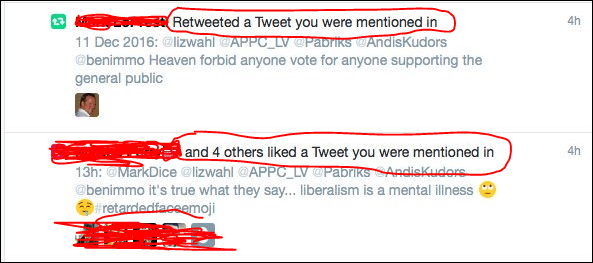
Now you are ready to hit the nail and get directly on their radar. Sincerely speaking, if you've carried out the previous tasks, then this wouldn't be a problem.
They would have noticed you've engaged with a good friend (or two) of theirs. You've commented and loved their stuff, so hitting them up would be the next best thing you will do.
Here's an engagement technique that works like magic.
I refer to it as the “revolutionary Twitter technique.”
Here's how it works. I mostly carry out this technique in 7-10 days. I always advise anyone do so, too.
Day 1
Favorite and drop a perfect-flowing comment in a discussion that both your target influencer and the friend (you’ve connected with) are mentioned in.
Here’s how you do it:
Go to Twitter’s advanced search. Then input the following:
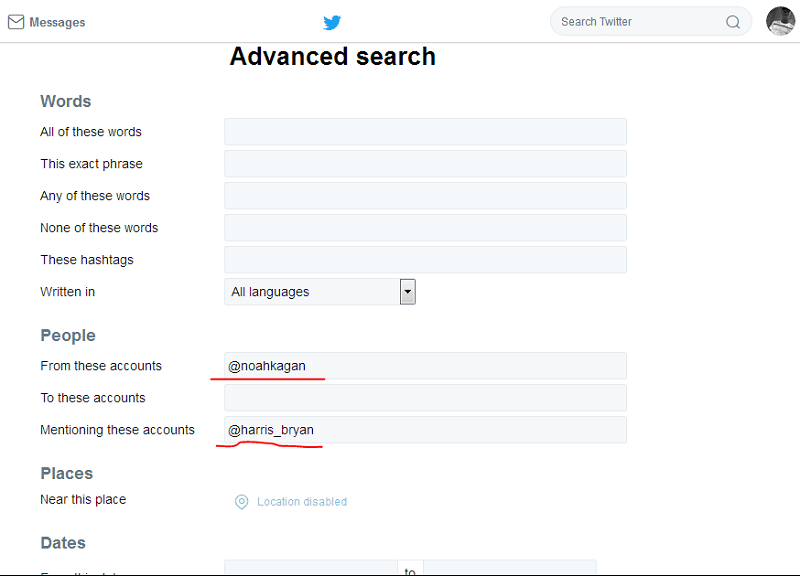
Your target influencer’s Twitter handle in the “From these accounts” box, then his good friend in the following box.
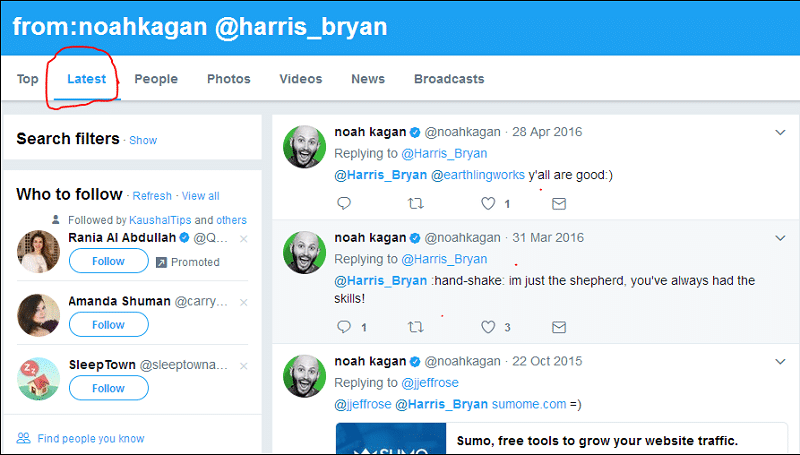
Select from the results the best discussion you can fit in smoothly.
SN. Don’t engage with all the tweets you get from the results because that’s not how the tweets would show up on their respective Twitter feeds. How can you engage with ten tweets (different dates) of 2 specific people in just a day?
Day 2-3
If the influencer’s friend has a guest post (or guest appearance) on the influencer’s blog, then tweet it out and tag them both.
It's simple!
Let me show you how to do it.
Find out if there’s any guest post the influencer’s good friend dropped on the influencer’s blog.
Google search “influencer’s good friend” + “target influencer’s blog” + “guest post.”
For example:
“bryan harris + Okdork + guest article”
![]()

Day 4 and 5
Find helpful things from their blog posts/podcast appearances and quote them in a tweet.
Day 6
Tweet an article of theirs (on their website or blog). Do not use the default tweet text. Instead, craft your own.
Here's an example:
When tweeting this article by Marina Barayeva on HubSpot, Melyssa Griffin edited the default tweet text to:
We all want more people to click on our blog posts and emails, right? Writing better headlines is the key: https://t.co/uH7qxOvt0g @hubspot
— Melyssa Griffin (@melyssa_griffin) July 8, 2017
Instead of:
How to Write Better Headlines [Infographic] https://t.co/oMHYvpJdd6 via @hubspot @MarinaBarayeva
— Simon Zaku (@S_Zakuu) July 10, 2017
Like seriously, Melyssa crushes when it comes to this.
Day 7
Subscribe to their email list and tweet out one of their freebies (e.g., a free email course you get upon signing up).
Day 8
A break.
Day 9
Reply to a non-promotional tweet. Make it sweet and let it flow.
Day 10
Another break!
The longer, the better. This works like magic. You can also refer to it as the “revolutionary Twitter technique.”
Here’s a key thing you should know about this technique. Keep an eye on when that influencer engages back, i.e., when he/she replies back to you or favorites your tweet.
Why?
Because most influencers don’t have time for social media, hence they set out specific times/days to engage on social platforms.
For instance, if you’re planning to carry out this technique on an influencer and then he replies to one of your comment on his tweet, mark the date.
Tweet at him around that period. It might be his “Twitter time.”
Stage #2: the outreach
At this stage, there are four main things.
Thing #1: Kindly ask for the best way to reach out.
Thing #2: Email them.
Thing #3: Let them know you've emailed.
Thing #4: A quick reminder (i.e., if there's no response in about 5-7 days).
Thing #1
After you've gotten on the influencer’s radar, you can now in a tweet (or reply) ask for the best way to contact them.
They wouldn't hesitate to let you know the best way to get in touch with them.
“Trust me; most people will eagerly answer such message. Just make sure you have a real Twitter profile that clearly states who you are” - Nick Churrick
So send them a quick and short tweet like this:
“Hey, @(influencer’s handle). What's the best email to get in touch with you?”
Don't complicate it. Just keep it simple, sweet, and short.
Thing #2
Send them an email. I wouldn't talk much about how to craft the best outreach email to an influencer, but here are a few resources to get you going.
Check out these articles for detailed guides on how to do this:
How to do blogger outreach the right way by Tim Soulo.
Five elements to consider in your cold outreach email before hitting send by David Schneider.
How to craft a perfect outreach email by Sujan Patel
Thing #3
Let them know you've emailed them.
— Simon Zaku (@S_Zakuu) May 22, 2017
It's optional but advisable.
Thing #4
If, after a few days you still don't get a reply, remind them in case they've forgotten.
Stage #3: the post-outreach
This is just to keep things going.
You can do this by sending a quick “thank you” tweet and let them know you are glad they replied.
Don't forget to keep it short and sweet.
Here's something I’ve learned in my short journey:
Never start an engagement with an influencer then disappear after you get what you want. Make it a routine to check that influencer’s Twitter feed and connect with him/her.
In some cases, I even turn on notifications for some of my influencers. How you plan this out depends on you.
But here's how I do mine.
I have an app on my phone called “Goal Tracker.” (Not sure if it has an iPhone version.)
![]()
Looks something like this. It reminds me to do something to keep/build a relationship with an influencer.
This is how it works. Every week, it notifies me to do something that will help build relationships with certain influencers.
For example, it notifies me to drop a reply to a tweet by Ryan Biddulph.
PS. Don't hesitate to let me know in the comments if there's a better way I could do this.
Here’s a quick recap of what we covered in this article
- The pre-outreach stage. This is where you build a relationship by engaging with the influencer and what matters to them
- The outreach stage. Ask for the best way to reach out. Craft the perfect email. Notify them. Remind them if they've forgotten.
- The post-outreach stage. Keep things going by keeping the engagement moving. Make it a routine to check their stuff out.
If you love the idea of building friendships with influencers in this post, I've created a free downloadable file for you.
It includes:
A checklist to guide you with this technique
- The one useful technique I use that saves me hours and energy, plus strengthens the relationship building. I call it the “auto-drive technique” (just 2 PDF pages).
All for free!
Your turn
Here are two simple things I want you to do right now.
#1: Think about one of the best ways you connected with an influencer on Twitter and share it with us in the comments. I'd love to know about it.
#2: If you're just starting out on Twitter and probably haven't been fortunate to connect with the big guys, also feel free to drop in the comments how you plan to do so.
Also feel free to leave your business Twitter handle.
That's it. See you around in the comments.
SN. A big thumbs up to all the influencers I've mentioned in this article. You rock!
The post How to Build Relationships with Any Twitter Influencer - Guide + Bonus appeared first on Ninja Outreach.
source https://ninjaoutreach.com/relationships-with-twitter-influencers/
